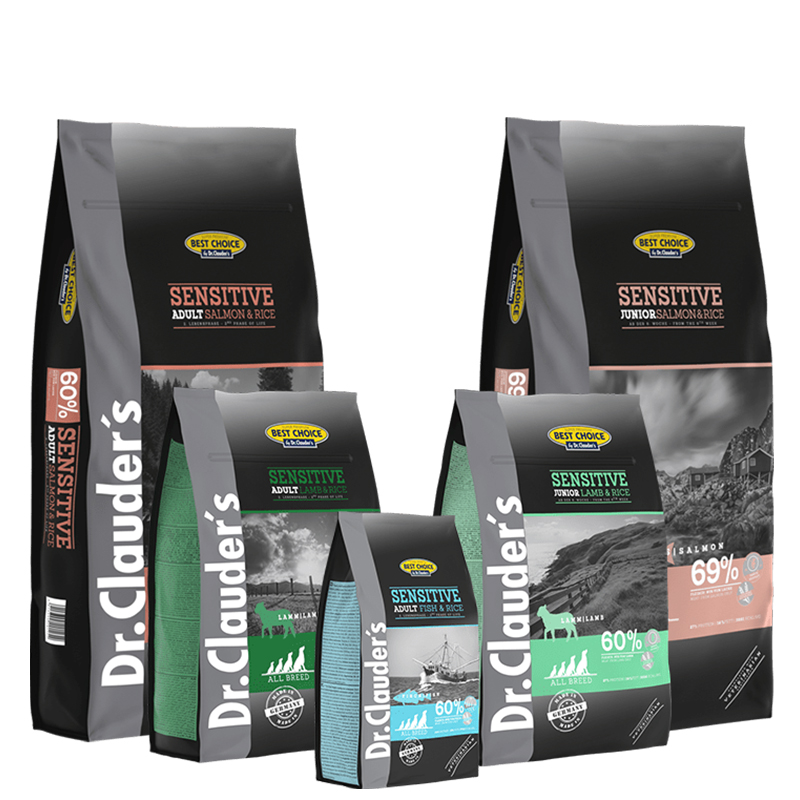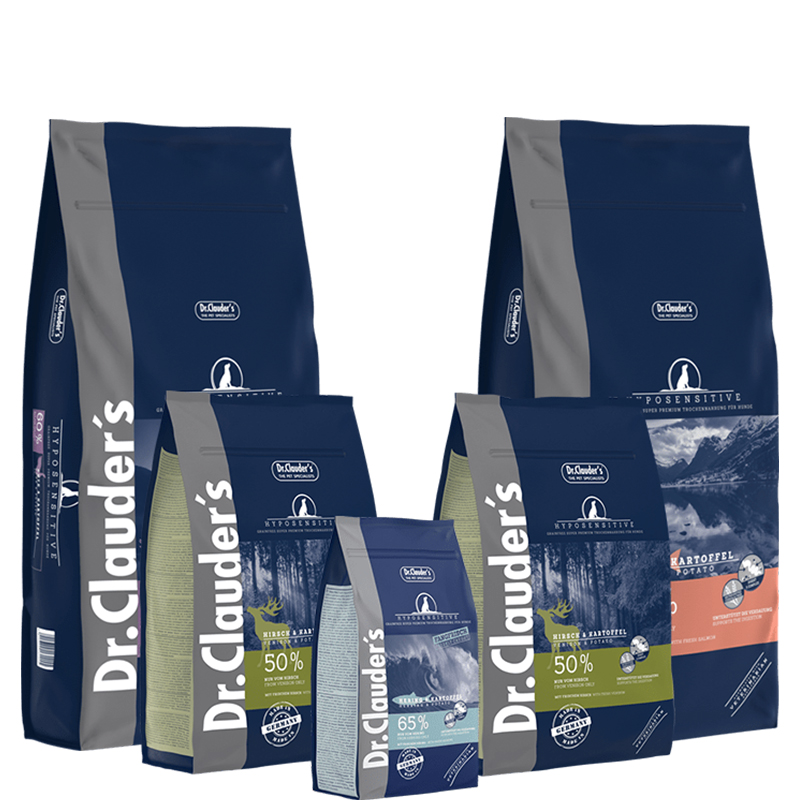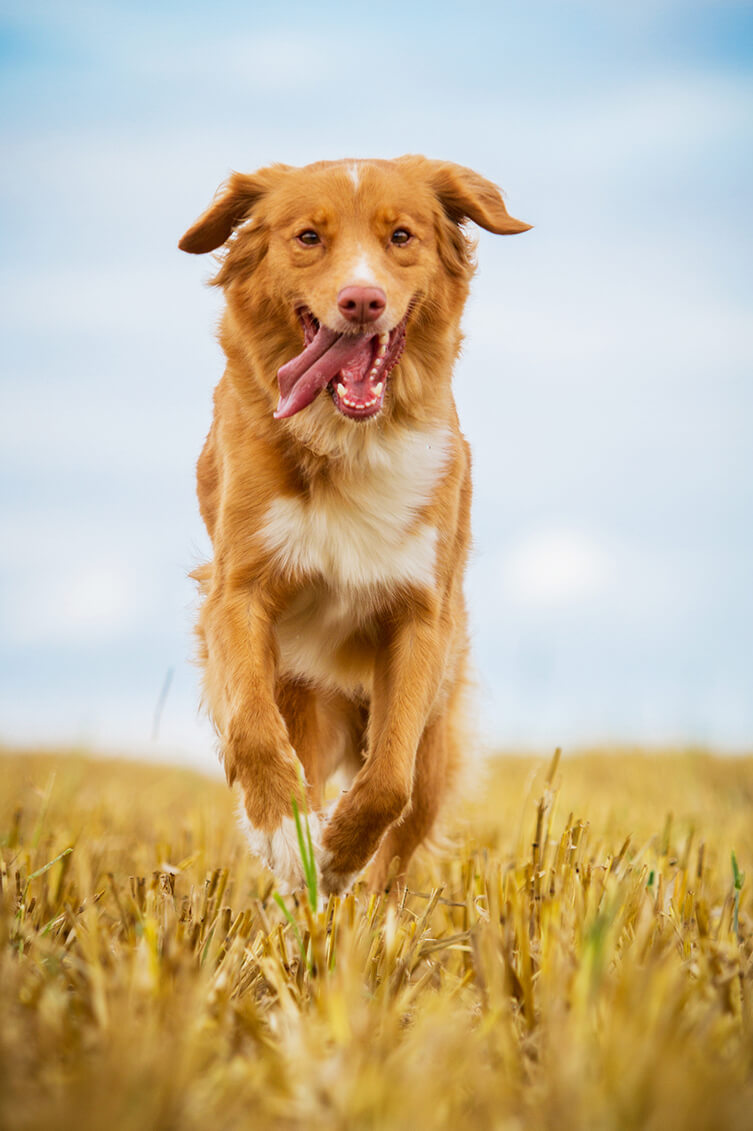What is the difference between an allergy and an intolerance?
Harmony is key to nutrition – a balanced diet is vital for our four-legged friends. So what is a healthy diet for dogs? Dogs need the following to stay healthy and vital:
- Ingredients that are well balanced
- In addition to lean meat and innards, also plant-based food, animal and vegetable fats, minerals, trace elements and vitamins
Good dry and wet food covers all of the above and optimally nourishes your dog.
Food intolerance or allergies are the third most common cause of discomfort. Symptoms of intolerance or allergies may include:
Most symptoms occur only a few days later, which makes it very difficult to determine the cause of the reaction.

Dogs rarely have allergies. Intolerances are much more common. Food intolerance is a hypersensitivity reaction that is not caused by the immune system. It can be caused by a variety of factors, for example due to a lack of enzymes, which can trigger a hypersensitivity reaction. In this case, the organism is simply unable to digest certain components of the food, similarly to gluten intolerance.
An allergy is a reaction caused by the immune system. This can happen if the dog eats something like a banana, for example. The organism usually forms antibodies that would be detectable through a subsequent blood sample. A true allergy, i.e. an extreme reaction of the body to an ingredient, occurs only rarely and can only be safely “treated” with a diet feed (reduction of raw material intolerance symptoms).
If a dog has an allergy, the antibodies formed on the allergen of an allergen source can recognise so-called epitopes. Eptiopes are formations of proteins and sugar. If a fruit that the dog is allergic to has a molecule with epitopes similar to the actual allergen, the antibodies can also dock to these similar epitopes and cause an allergic reaction. So, for example, dogs that are allergic to bananas can also have an allergic reaction after subsequently eating a kiwi.
The most common triggers for allergies or intolerances are plant or animal proteins, i.e. components of proteins in the food. Carbohydrates can also act as a trigger in rare cases. In principal, any protein in the food can cause an allergic reaction, a subsequent cross sensitivity or intolerance.
How do I find out what my dog can't take?
Elimination diet?
It is important to check with your veterinarian whether other factors such as a zinc deficiency may be the cause. If this can be excluded, the veterinarian will recommend an elimination diet.
- Your dog will only be fed a single protein and a single carbohydrate source for a certain period of time.
- This is continued until the allergy-causing culprit is found through the exclusion of other ingredients.
- The dog cannot be given any treats or other foods during this time.
This type of diet requires a lot of effort on your part, but it is well worth it, as it will allow you to quite accurately determine the components of the food that your dog reacts to.
Food for elimination diet
As mentioned previously, the odds of your dog having an allergy are quite slim. In most cases the issue is intolerance. To find out what kind of intolerance it is, you can use the products from Dr.Clauder. We can help with the following types:
- Protein source:
First, you should examine whether your dog has a food intolerance to a certain protein, such as lamb or beef. If your dog cannot tolerate a protein source, you should stop using it. As you have already found the solution, the test procedure for your dog is complete. You can use the food of your choice minus this protein source.
- Gluten:
If your dog does not have protein intolerance, you should test whether it can tolerate gluten-free food. Gluten is a protein that is not only found in wheat, but also in rye or barley. Hence, gluten-free does not mean grain-free. If your dog can tolerate this food, it probably has gluten intolerance. You can continue to administer this food without any problems.
- Grains:
If you dog continues to have a reaction, there is a good chance that it has grain intolerance. You should thus test if your dog reacts to grains. There are many varieties of grains, including wheat, spelt, corn, rice, millet, oats or rye. If you dog was able to tolerate the grain-free food, you should continue to feed this. Most likely your dog has grain intolerance. The test is now complete.
Dr.Clauder's product recommendation

First, test whether your dog reacts to a protein source such as pork or chicken, for example. You can use Dr.Clauder’s wet food for this, because each of the six cans has only one protein. If you do not feed your dog wet food, you can continue with step 2. To the products.

If your dog can tolerate all protein sources, test for gluten intolerance. You can use Dr.Clauder’s Sensitive dry food. If it turns out that your dog is gluten-intolerant, you can still feed it rice, for example. To the products.

Did your dog have a reaction to the Sensitive food? Odds are that your dog is reacting to grains. Dr.Clauder’s Hyposensitive dry food can help. This is potato-based and has no grains whatsoever. To the products.



